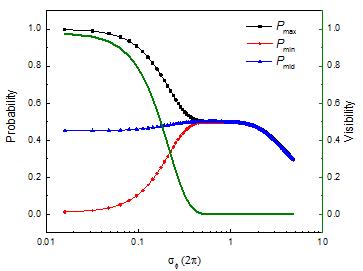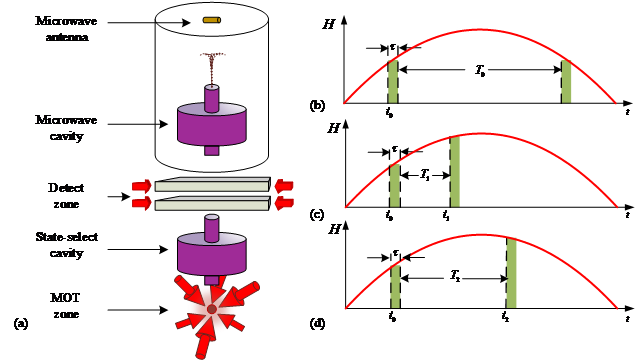Recently, a research team from Shanghai Institute of Optics and Fine Mechanics of the Chinese Academy of Sciences (CAS) has made progress in the evaluation of the magnetic field in the interaction zone of cold atom fountain. The relevant results were published as editor's pick in Journal of the Optical Society of America B.
The intensity of magnetic field is one of the most basic physical quantities, and most of the precise measurement fields need the magnetic measurement. For the cold fountain clock, the magnetic field introduces the maximum offset term through the second-order Zeeman effect and magnetic field measurement is one of the most basic and necessary measurement parameters in its performance evaluation. More accurate magnetic field measurement and evaluation methods (including direction, distribution and other parameters) have always been the direction of researchers' efforts.
In this study, the researchers proposed a method to evaluate the radial magnetic field distribution in the interrogation area of the fountain clock by measuring the visibility of the interference fringes of the magnetic-sensitive microwave transitions.
In the experiment, through the establishment of magnetic field distribution model, they got different additional phases for different atoms due to passing through different paths. The additional phase resulted in inhomogeneous widening of the interference fringes and thus affected the visibility of the fringes. According to the relationship between the additional phase and the free evolution time of cold atoms, the researchers designed and completed the verification experiment, and realized the measurement of the uneven distribution of 100pT magnetic field. The experimental results are in good agreement with the theoretical expectations.
The related research groups have made a series of distinctive research results in magnetic field measurement based on the atomic fountain, including the magnetic measurement by the first-order Zeeman effect, the magnetic measurement in multiple ranges according to different magnetic sensitivity effects, direct magnetic field vector measurement, non-uniform compensation of magnetic field, and using the transition resolution of magnetic sensitivity level and measuring scalar, vector, tensor optical frequency shift (cooperation), etc.
This novel research is another periodical achievement of magnetometry, which realizes the measurement of the inhomogeneous distribution of magnetic field in a small area.
This research is supported by Strategic Priority Research Program of the Chinese Academy of Sciences.

Fig. 1 The curve of visibility changing with additional phase distribution. (Image by SIOM)
Fig. 2 Schematic diagram of measurement experiment. (Image by SIOM)
Fig. 3 Experimental results. (Image by SIOM)
Article website:
https://doi.org/10.1364/JOSAB.390249
Contact:
Mr. CAO Yong
General Administrative Office
Shanghai Institute of Optics and Fine Mechanics, CAS
Email: caoyong@siom.ac.cn